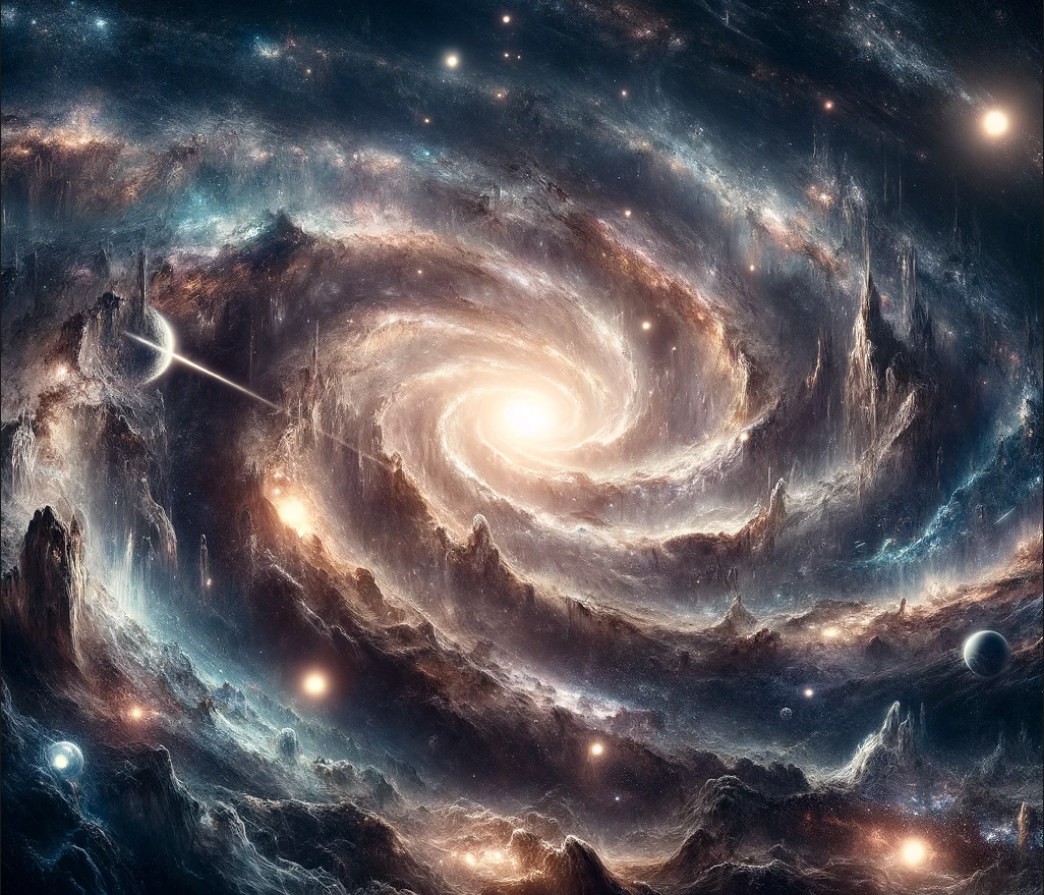In the context of astrophysics and cosmology, a trillion years (1,000,000,000,000 years) is a time scale that far exceeds the current age of the universe, which is about 13.8 billion years. Discussing events on a trillion-year scale involves deep time scenarios and theoretical predictions about the future of the universe. Here are some key concepts and events that are often discussed in the context of trillion-year time scales:
在天体物理学和宇宙学的背景下,一万亿年(1,000,000,000,000年)1 兆年 是一个远远超过宇宙当前年龄(约138亿年)的时间尺度。 讨论万亿年规模的事件涉及深层次的时间场景和关于宇宙未来的理论预测。 以下是在万亿年时间尺度背景下经常讨论的一些关键概念和事件:

The image visualizing the concept of a 'trillion years' in a cosmic context has been created. It portrays a universe that has aged a trillion years, capturing the advanced stage of cosmic evolution with features like dimming stars, aging galaxies, and the vastness of space. The mood conveys profound timelessness and the gradual changes occurring over such an immense period, evoking a sense of awe and the inexorable passage of time in the cosmos.
在宇宙背景下可視化「萬億年」概念的圖像已經被創建。 它描繪了一個已經老化了數萬億年的宇宙,捕捉了宇宙演化的高級階段,包括變暗的恆星、老化的星系和浩瀚的太空等特徵。 這種情緒傳達了深刻的永恆性和在如此漫長的時期內發生的逐漸變化,喚起一種敬畏感和宇宙中時間的無情流逝。
恒星演化:大多数恒星,包括我们的太阳,早在一万亿年过去之前就已经完成了它们的生命周期。 例如,我们的太阳预计将在大约 50 亿年后变成一颗白矮星,然后随着时间的推移而变冷。 然而,宇宙将在数千亿年的时间内继续形成新的恒星,但最终,随着恒星形成所需的气体供应耗尽,恒星的形成将停止。
恒星遗迹的退化:在万亿年的时间范围内,即使是恒星的遗迹,如白矮星、中子星和黑洞,也会发生显着的变化。 白矮星和中子星可能会冷却并消失,而理论上黑洞会通过霍金辐射的过程慢慢蒸发。
质子衰变:如果质子不稳定(尚未证实),它们可能会在一万亿年或更长时间的时间内衰变。 质子衰变是放射性衰变的一种假设形式,其中质子衰变成较轻的亚原子粒子。
宇宙的热寂:在如此极端的时间尺度上,宇宙可能会接近一种被称为“热寂”的状态,在这种状态下,所有物理过程都已完成,宇宙已经达到热力学平衡,没有留下显着的能量梯度。 电力过程。
黑暗时代:一万亿年后,宇宙可能进入“黑暗时代”。 到这个时候,大多数恒星都会烧毁或爆炸,留下白矮星、中子星和黑洞。 随着时间的推移,即使是这些残余物也会消失,宇宙将变得黑暗、寒冷,并且缺乏星系和恒星等大规模结构。
这些场景基于当前对物理学的理解,并对质子衰变和宇宙结构的未来行为等过程做出了一些假设。 值得注意的是,此类预测是推测性的,并且取决于可能尚未完全理解的物理定律。
Stellar Evolution: Most stars, including our Sun, will have completed their life cycles long before a trillion years pass. For example, our Sun is expected to become a white dwarf in about 5 billion years and then cool over time. However, the universe will continue to form new stars for hundreds of billions of years, but eventually, star formation will cease as the supply of gas needed for star formation is depleted.
Degradation of Stellar Remnants: Over a trillion-year time frame, even the remnants of stars, like white dwarfs, neutron stars, and black holes, will undergo significant changes. White dwarfs and neutron stars might cool and fade away, while black holes are theorized to slowly evaporate through a process known as Hawking radiation.
Proton Decay: If protons are unstable (which is not yet confirmed), they might decay over time scales of a trillion years or more. Proton decay is a hypothetical form of radioactive decay in which the proton decays into lighter subatomic particles.
Heat Death of the Universe: On such extreme time scales, the universe might approach a state known as the "heat death," where all physical processes have run their course, and the universe has reached thermodynamic equilibrium, with no significant energy gradients left to power processes.
Dark Era: Beyond a trillion years, the universe might enter the "dark era." By this time, most stars will have burned out or exploded, leaving behind white dwarfs, neutron stars, and black holes. Over time, even these remnants will fade, and the universe will become dark, cold, and devoid of large-scale structures like galaxies and stars.
These scenarios are based on current understandings of physics and make several assumptions about processes like proton decay and the future behavior of cosmic structures. It's important to note that such predictions are speculative and depend on physical laws that might not be fully understood yet.
